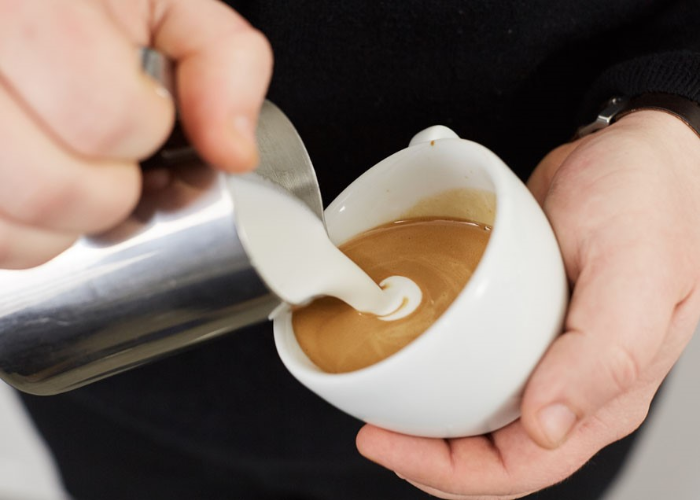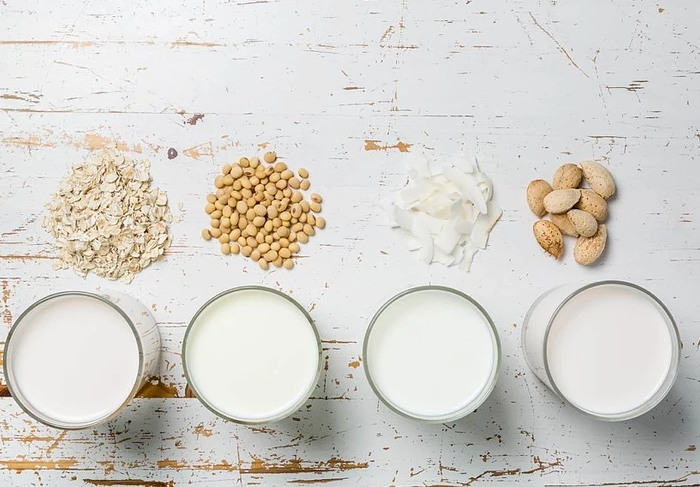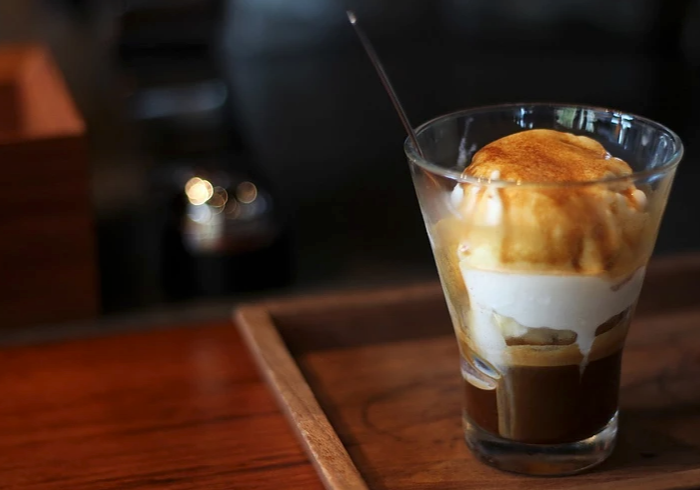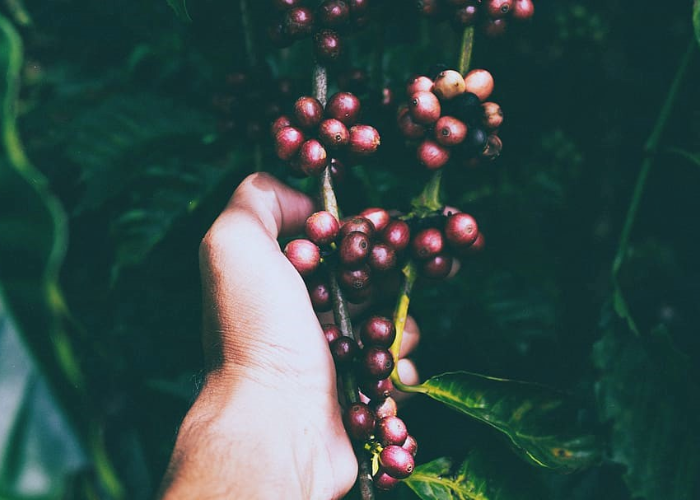
Revealing the Secret of a Coffee Cherry
Coffee has become part of our daily life and it serves as an energy boost in the morning. Some of you may know coffee beverages are made from its beans grown on plants. But do you ever know the coffee beans we normally see are actually hiding inside the bright red coffee cherry? Read to learn more about the basic anatomy of the coffee cherry and how its processing method affects our cup.

Getting to know the coffee plant
The beans we usually recognize are the roasted ones and they are indeed the seeds of a fruit. The fruit is often known as coffee cherry and they are grown on coffee plants.
During cultivation, coffee trees are often pruned short to conserve the plant’s energy and to aid in harvesting. If they are left unattended, they can grow to more than 30f ft (9 m) high. Also, smaller trees generally have better yield and quality in a limited space.
The tree is covered with green, waxy leaves growing opposite each other in pairs. Coffee cherries grow along the branches. Since coffee tree grows in a continuous cycle, it is not unusual to observe flowers, green fruit and ripe fruit simultaneously on the same tree. The time that a coffee tree takes to reach full fruit production is much dependent on the variety, most likely it takes three to four years. According to the National Coffee Association USA, the average coffee tree produces 10 lbs of coffee cherries or 2 lbs of green beans annually.
Furthermore, not only does varieties of coffee affect the characteristics of their beans, they also depend on the size, flavour, disease resistance and many other factors.
The anatomy of a coffee cherry
The outermost skin of a coffee cherry is called the exocarp. It gradually changes from green to a bright red, yellow, orange, or even pink coat when it ripens. One important point to note is that green coffee cherries are not equivalent to green coffee beans, which are the seeds from inside the ripe coffee cherry before undergoing roasting process.

Right beneath the skin is a thin pulp layer called mesocarp. Under it is a slimy mucilage layer. There is also a layer of pectin followed by the mucilage. All of these layers are filled with sugars, which play an important role during fermentation.
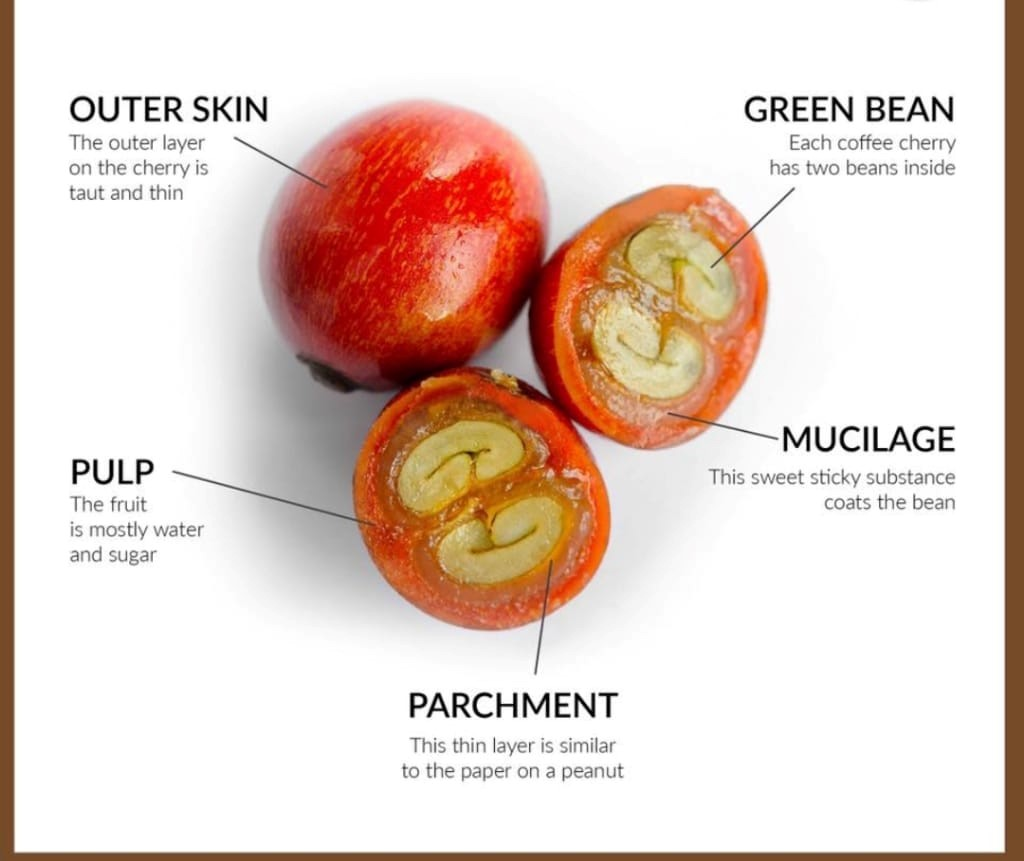
Layers of a coffee cherry
When the outer layers are removed, there expose the coffee seeds. The seeds are technically named the endosperm but more commonly referred to a more familiar term “bean”. A coffee cherry usually contains two beans, each of them is covered by a thin envelop called the endocarp, also known as the silverskin and a paper-like parchment.
For commercial coffee bean processing, the parchment is mostly removed in hulling, which is the first stage of dry milling process. People make use of machines or millstones to get rid of any remaining fruit and the dried parchment from the beans. Parchment coffee, which are green beans with this layer retained, are also sometimes sold.
There is a group of sclerenchyma cells firmly attaching to the beans called silverskin. They are responsible for supporting and protecting the seed. During roasting, they come off as chaff.
In about 5% of world’s coffee cherries, there is only a single bean inside that is larger and rounder than usual. These special beans are called peaberry.

Peaberries are very rare because they are the results of growth errors in nature. These errors include but are not limited to natural mutation, insufficient pollination or unfertilized ovule. Despite the genetic malfunction or environmental hardships, sometimes the seed simply fails to grow. In general, peaberries are discovered more often when parts of coffee tree are exposed to extreme weather conditions.
Some people believe that peaberries have a sweeter taste and enriched flavour than standard beans, therefore they are sometimes sorted out and sold at a higher price. These delicate beans also need special care during roasting due to their rounder-than-normal shape. Hence, it’s better to separately handle the beans to avoid an inconsistent roast.
Cherry & Leaf offers you with a premium Brazil peaberry that gives an herb-like, dried fruit, plum and balanced cup. Make sure you don’t miss out!
How bean structure impacts your cup
The previous article has introduced the basic structure of a coffee cherry. To further explore the relationships between bean structure and taste of your cup, we are going to discuss below.

The coat and fruit of coffee cherries are the commercially speaking the low-valued parts, therefore they are usually discarded, although they are sometimes collected to make cascara for tea and other products.
Besides, coffee roasters have developed various processing methods to remove the intact skin and mucilage from coffee beans. Hence, the final outputs of coffee are of different flavours and profiles. For example, fruit flesh of washed beans is entirely shed before sending to dry. On the other hand, natural coffee has all of the flesh shed after drying. In honey and pulped natural processing, the coat and sometimes a bit of the mucilage is shed before drying but the remaining mucilage and other layers are removed after.

Coffee bean with mucilage
It is said that the mucilage layer contributes to the sweetness of the coffee profile with more of the body. Since coffee cherries start to germinate soon after harvest, this is the point when they begin to consume their sugar reserve in the seed. The process continues until drying begins. Natural processed beans reach drying terrace earlier than pulped naturals or washed beans. As a result, sugar content tends to be higher in the naturals, forming a sweeter bean.
In terms of flavour, washed coffees are relatively cleaner and more consistent which can magnify the acidity. Whereas natural coffees are more fruity, sweeter and richer in body.

During both dry and wet processing, the sugars in mucilage undergo fermentation which eventually impact the overall flavour. Thus, careful monitoring and consistent drying are essential to prevent unpredictable fermentation that may give undesirable flavours in the end.
The fundamentals of the coffee cherry can provide you with a comprehensive picture to better understand production, processing and roasting of beans, as well as how the choice of coffee with different processing methods impact your cup.

